
If you’re new to B2B marketing, it may be difficult to know where to begin. Developing a solid marketing strategy requires marketers to juggle between creative demands, budget limits, and—of course—ensure that they cater to our audience. Since, your marketing efforts are, you know, ultimately for them.
When it comes to understanding your target audiences, there are two main types:
This means that some companies cater toward individual consumers while others focus on approaching companies and organizations. That’s what makes marketing between B2B and B2C different.
In this article, you’ll learn to understand how B2B marketing works, the different marketing strategies for B2B businesses, and how it can benefit your business.
B2B marketing stands for business-to-business marketing, which means any marketing strategy is targeted towards a business or organization. A company that sells products or services to another business or organization is considered a B2B business. Hence the need for effective B2B marketing strategies.
Often, when people think of B2B marketing, they think it is less interesting when compared with B2C marketing. They might assume it mostly entails direct marketing techniques such as sending messages straight to clients that you’ve identified.
The good news is that the world of B2B marketing has evolved and so have the behaviors of buyers! These days, everyone goes on to Google to seek solutions to their work, personal, and relational problems. People can now access information within seconds at their fingertips. Studies have shown that 50% of Google users click on their result within 9 seconds of searching.
The purpose of B2B marketing is to raise brand awareness amongst other businesses, to position your business in the market, and convert them into customers.
An example of a company that engages in B2B marketing is HubSpot! Their main clientele consists of other businesses and not individual consumers.
B2B and B2C (business-to-consumer) marketing are very different. Their audiences vary, so naturally, their strategies, approaches, and communication differ too.
B2B marketing targets the needs and wants of individuals who are making purchases on behalf of, or for, their organization. A few examples of B2B companies:
B2C marketing targets the needs and wants of individuals who represent themselves in their purchasing decisions. A few examples of B2C companies:
The differences between B2B and B2C marketing:
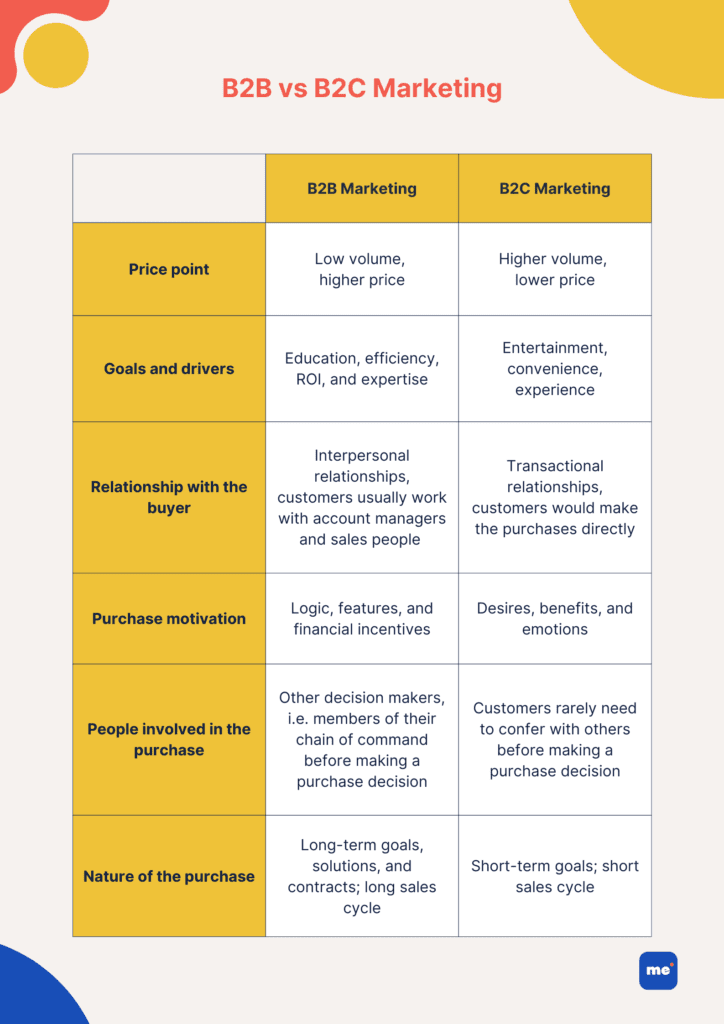
With that, let’s dive into the best B2B marketing tips!
Before creating an effective B2B marketing strategy, you must first understand your brand positioning, your audience and the market by conducting thorough research.
Here are a couple quick pointers to get your started:
3. Understanding the buyer’s journey
4. Run a competitive analysis
Some prompts:
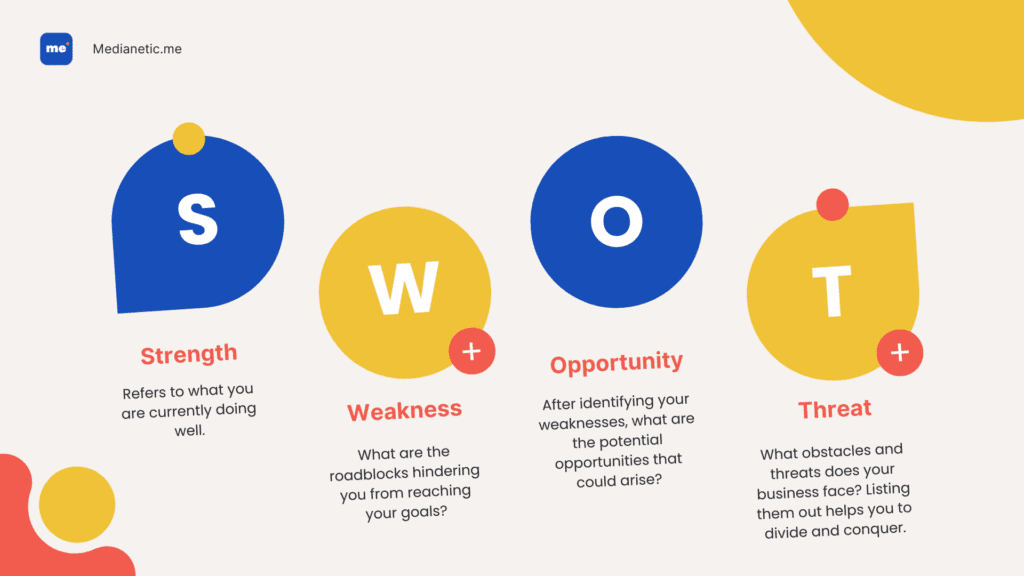
5. Explore marketing channels to use – once you’ve completed your competitive analysis you’ll see the opportunities in the different types of marketing channels to take advantage of.
Which leads me to my next point about the different marketing strategies and channels for B2B marketing.
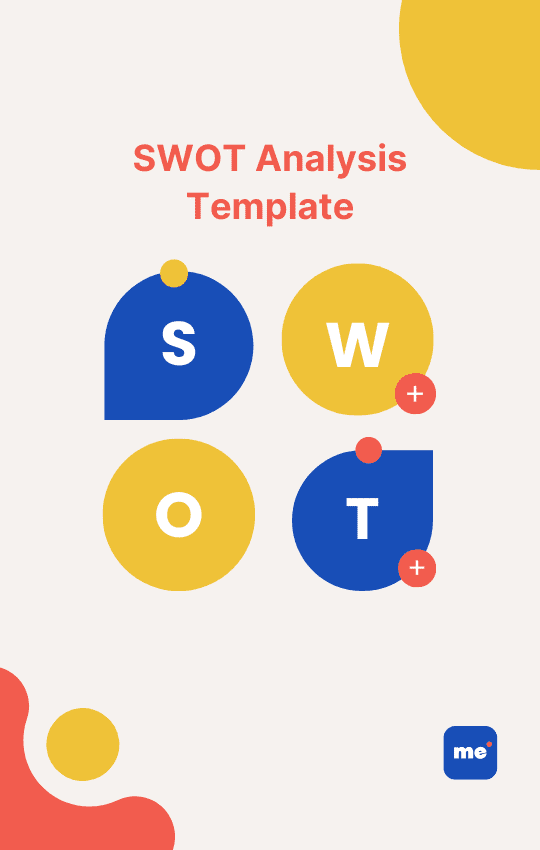
In the realm of professional services, having a high performing website is a valuable asset. It’s more than just a digital storefront for your organization–it helps to build visibility and credibility. Developing your online presence will establish yourself as a highly trusted expert in the marketplace.
Regardless of the industry or business you’re involved in, there’s no denying that we use search engines to find solutions to everything, including professional service providers. A research conducted by Hinge Marketing found that 80% of people look at websites when checking out service providers—the most commonly used information source by far. Potential customers and clients need to be able to find your organization online in order to stand a chance at winning their business.
Consider how you might nurture leads as they first visit your website using these prompts:
Here’s a non-exhaustive list of what aspects a good website needs to have:

LinkedIn is without a doubt one of the most active platforms for B2B marketing. With over 310 million active monthly users, you cannot ignore this platform. As a B2B marketer, if you want to get your content seen by your target audience, LinkedIn should be your primary social platform.
According to the B2B Content Marketing 2021: Benchmarks, Budgets, and Trends report from CMI and MarketingProfs, LinkedIn is the most-used social media platform for B2B marketers (at 96%). Another study found that nearly 50% of B2B marketers have generated leads via LinkedIn.
The platform is great for sharing:
LinkedIn, like many platforms these days, offers a robust suite of analytics to measure every aspect of your program. You can also find new content suggestions to better cater to your audiences’ needs and interests.
LinkedIn marketing tip: encourage your employees to share your content on their LinkedIn profiles! According to LinkedIn, the employee network is 10x larger than its company’s follower base. Plus, content shared by employees receives 8x more engagement than content shared by brand channels.
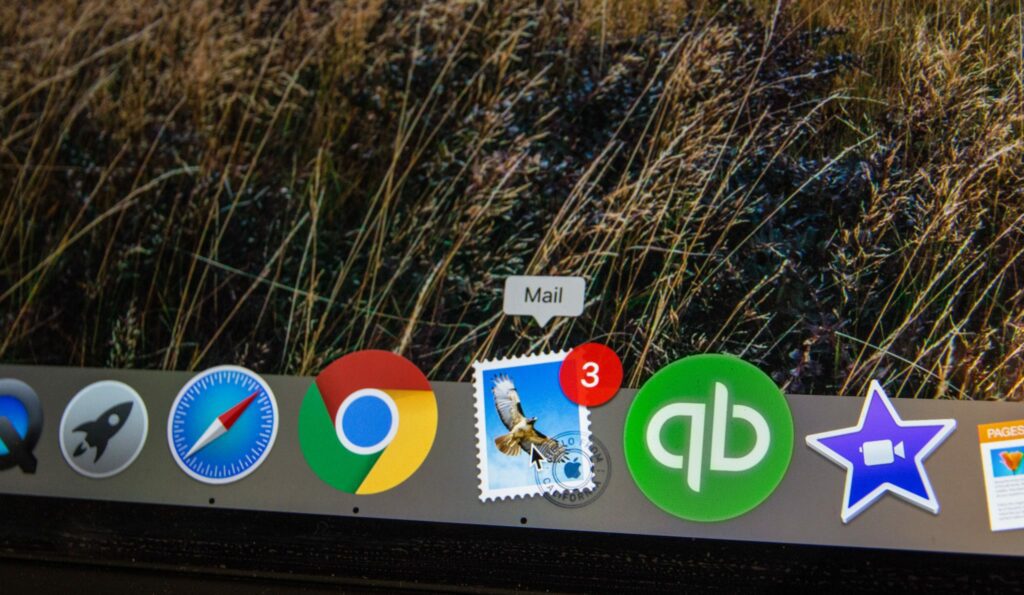
Though there are many new communication methods in practice, one of the oldest and most effective marketing channels that’s still effective is email marketing.
You might ask yourself, in an age where social media marketing and video campaigns are booming, is email marketing still worthwhile? Well, here’s what the numbers have to say about it:
Emails that are engaging will turn subscribers into leads, who might turn into a buying customer. Emails are also a powerful vessel for businesses to share branded content in an organic way. Moreover, utilizing email marketing allows us to collect first-party data directly from your marketing tools.
One of the distinct ways in which B2B email marketing differs from B2C email marketing is this: the messaging appeals less to the readers’ emotion, but more towards logic and ROI. When you’re creating your email marketing strategy, you need to consider the kind of content that will consistently resonate with your target audience and focus on the things that matter most to them.
Here are some best practices for B2B email marketing:
At the end of the day, you should ask yourself this, how can your business help theirs grow? Remember the things that drive B2B buyers when it comes to curating relevant content that resonates with your business customers.
Source: Medium

SEO, content marketing, and your overall marketing strategy all ties in together. When your content performs well on search queries on search engines, it can direct traffic and turn them into qualified leads. Research shows that 71% of B2B clients start product research with search engines. You never know which B2B buyer might find the answers to their problems with the content on your site. That’s why all content should be optimized for SEO and created with the purpose of driving organic traffic to your site.
If you’re not sure of topics, content, and keyword ideas, you can use free keyword tools online such as:
If you’re planning to succeed in B2B marketing, you’re going to need to have a solid content marketing strategy. Content is what attracts leads and B2B buyers to engage with your business further. In fact, 52% of B2B buyers say they’re “definitely” more likely to buy from a brand once they’ve read their content! Simply put, content marketing is one of the most useful and important lead generation strategies.
Since we’ve talked about how B2B customers are focused on expertise, driven by logic, and motivated by financial incentives, content marketing is the perfect tool to satisfy these.
Here’s a simple diagram to understand the different elements needed to build your content marketing strategy.
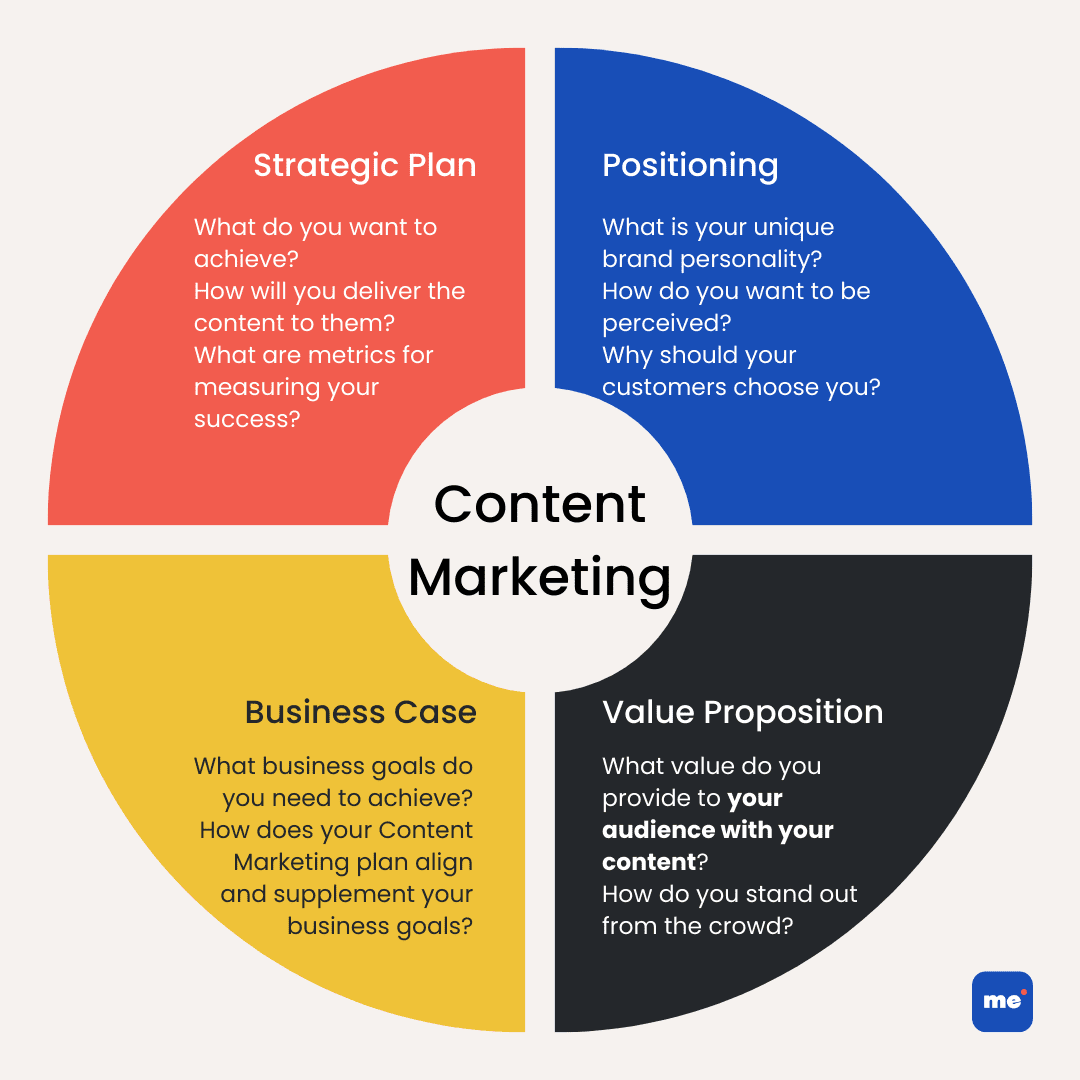
Remember that every content you create has to be with purpose. You need to create content that adds value to the customer, so it’s best to align these with the various stages of the buyer’s journey. Note that because B2B buyers experience longer sales cycles compared to B2C buyers, their content marketing approach varies too.
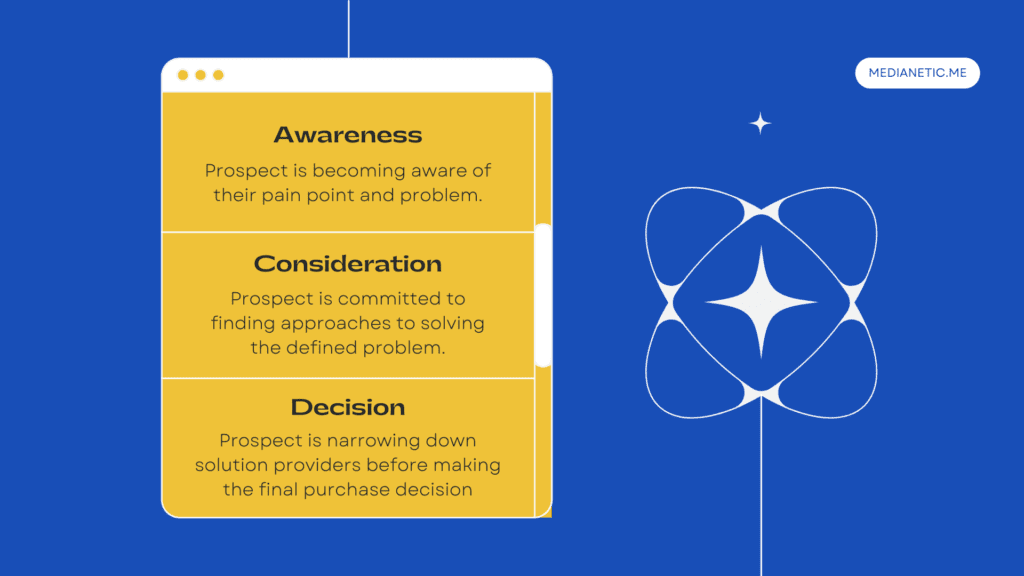
Check out our other blog for more content marketing tips here!
B2B marketing opens up a wealth of opportunities to drive success; However, it isn’t effective unless you keep your business audience in mind. Remember to keep your marketing message focused on how you can help their business and direct your B2B marketing efforts towards them.
If you’d like to work together to reach your B2B customers, get in touch with us at hello@medianetic.me! We would love to partner and achieve your goals together.

Medianetic Sdn Bhd
200301016995 (619415-K)
No. 59, 2nd Floor, Block E, Zenith Corporate Park, Jalan SS7/26 Kelana Jaya, 47301 Petaling Jaya, Selangor
hello@medianetic.me
+603 7960 3088 (Office)
Medianetic Sdn Bhd © 2023
Made by Medianetic